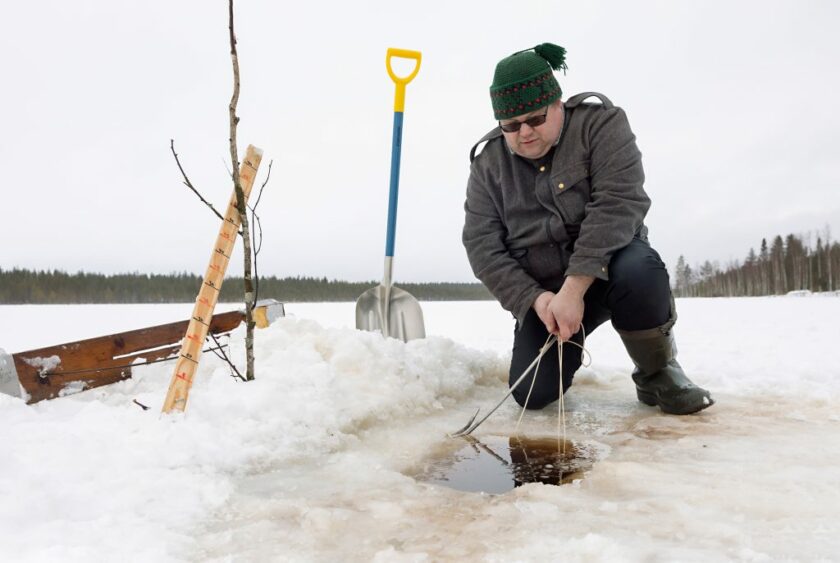Professional fisherman, docent Tero Mustonen has received the Goldman Environmental Prize in the USA. It is the world’s most significant environmental award, also called the Green Nobel Prize. It’s a tribute to ordinary people who have done extraordinary things to protect the planet. The Prize was awarded to Finland for the first time.
The Goldman prize is awarded to Mustonen for the work of the Snowchange cooperative, which he founded together with his wife Kaisu Mustonen, to combat climate change and nature loss. The prize amount is 200,000 dollars (about 185,000 euros). The foundation hands over the prize money to Mustonen’s non-profit cooperative, Snowchange (founded in 2000).
The Goldman Prize states: “He is fighting climate change at the grassroots level and has created a model for restoring nature that can be applied all over the world.”
“Under his leadership, the world’s most important carbon sinks are being revived after decades of industrial use into crucially important areas of diversity.”
Mustonen leads Snowchange Cooperatives’s Reviving landscape restoration program (www.maisema.org), which was established in 2018. The mainly foundation-funded program covers an area of 52,000 hectares of swamps, water bodies, forests, and wetlands. The biggest single site is Kivisuo at Muhos, with a size of more than 750 hectares. The biggest part of the program is the Koitajoki river restoration process, where by 2025 1,000 hectares of marshes will be restored, village culture will be supported in Ilomantsi, migratory fish habitats will be renewed, and solutions will be sought to secure the future of the highly endangered lake salmon in Ala-Koitajoki.
The restoration program has targets from Inari to Pirkanmaa, in Central Finland and Eastern Finland, a total of more than 70. A special priority area has also been the restoration of forests and waterways in the Sámi region. The work combines the indigenous knowledge of the Sámi people and the latest science.
Mustonen, who was one of the lead authors of the latest IPCC report, is also a professional fisherman. At the heart of this is the winter fishing of vendace as part of the activities of Snowchange. Mustonen comments on the award:
“The compass for my own work has been knowledge stemming from fishing. The village elders have guided us to work for nature. We will do our part to ensure that lake salmon, forest deer, Sámi forests and wetlands will also recover and do well in the future. The award is the greatest recognition possible for Showchange’s 23-year-long work, which combines traditional knowledge and science. We are very grateful for that.”
What is Snowchange?
The purpose of Snowchange Cooperative is to produce, convey and offer information, skills and services related to natural activities, local cultures, and folklore in accordance with the principles of sustainable development. In its operations, it promotes Finnish forest tradition, culture and thinking. It’s located in Kontiolahti, North Karelia.
Currently, Showchange’s cooperation abroad mainly takes place with Saami (Finland, Russia, Sweden and Norway), Saha Republic (Russia), Alaska (USA) and British Columbia, Northwest Territories and Nunavut (Canada) and Greenland. In addition to these regions, partners can be found in all Arctic countries and New Zealand and Australia, among others.
n total, Snowchange employs approx. 13-30 people, depending on the season and needs. In addition to this, the cooperative has regional coordinators around the world in different natural economy villages (Alaska, Canada, Greenland, Iceland, Sami region, Siberia, Australia, New Zealand).
Snowchange was founded in the fall of 2000 to promote cooperation of Tampere University of Applied Sciences’ environmental engineering education with the northern indigenous people and to collect observations about the environmental changes taking place in the northern regions. Cooperation with the Arctic Council’s Arctic Climate Impact Assessment (ACIA) project began in 2001. This enabled, e.g. cooperation among the indigenous peoples of Finland and Russia, such as the Sami. In November 2002, WWF’s Finnish fund awarded Snowchange as the best national environmental project.
The operation took its current form in the fall of 2005 when, after the Snowchange project ended, the Snowchange Cooperative was founded. Snowchange Cooperative was confirmed as the cooperative’s English name.
Community spirit is emphasized in the operations of Snowchange founded by Tero Mustonen. The goal of the cooperative is to find a common benefit between landowners and nature, by working together.

